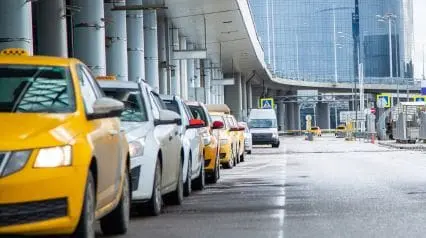What is Autonomous Vehicle Safety?
Autonomous vehicle safety is a set of safety protocols, procedures, and guidelines for self-driving cars. These safety measures aim to ensure that autonomous vehicles are safe for users, passengers, and pedestrians.
At its core, autonomous vehicle safety involves using sensors and other technologies to guide a vehicle autonomously through roadways while avoiding obstacles or potential traffic dangers. Self-driving cars use numerous onboard systems such as cameras, range finders, ultrasound sensors, radar equipment, and 3D lidar (light detection and ranging) technology to detect possible hazards in their path.
When is a Vehicle Fully Autonomous?
According to the Society of Automotive Engineers (SAE), fully autonomous vehicles for consumers and businesses are still far off. However, many car and truck brands have incorporated semi-autonomous driving features in their new vehicles.
A vehicle’s autonomy can be divided into 5 stages:
- Level 1 automation: Various driver assistance systems are available on cars, such as cruise control, acceleration, and lane changes.
- Level 2 automation: Autopilot systems with advanced cruise control can take safety measures like emergency braking, but drivers must remain vigilant at the wheel.
- Level 3 automation: Cars that still require a human driver but can perform some “safety-critical functions” in certain situations. Vehicle control is transferred from human to automated driving systems at considerable risk.
- Level 4 automation: An automated vehicle that operates without much driver input, excluding unmapped locations and unfavorable weather conditions.
- Level 5 automation: Complete automation under all circumstances.
Benefits of Autonomous Vehicles
Autonomous vehicles are projected to have a notable effect on the environment, road congestion, and more. Some advantages include the following:
- There will be fewer instances of impaired driving as self-driving cars will reduce the risk of drunk or drugged drivers taking the wheel.
- Self-driving vehicles use systems that find the fastest route to a destination, resulting in better fuel efficiency and reduced emissions and costs.
- According to recent studies, autonomous vehicles are safer than those driven manually. This has been confirmed by both the Department of Transportation and the National Highway Traffic Safety Administration.
Safety Risks of Autonomous Vehicles
The use of self-driving vehicles is not without risks, however. Some of the dangers include:
- Motor vehicle accidents could potentially happen due to most existing infrastructure’s inability to react to mistakes, errors, or deficiencies caused by autonomous vehicles.
- Motorists may become overly confident in the abilities of a self-driving vehicle, leading to delayed responses in potentially hazardous scenarios.
- Cars are at risk of being hacked, leading to stolen vehicles, property, and personal information and possibly being used in acts of terror.
- Unexpected software system malfunctions can cause accidents involving other road users.
- Self-driving cars are driven much less in the real world than conventional vehicles, so further research is needed to determine their safety.
Ensure Safety While Driving Autonomous Vehicle with SafetyCulture
Eliminate manual tasks and streamline your operations.
Get started for FREEConsiderations for Automated Commercial Fleets
Automated commercial fleets, like trucks and shipping vehicles, are one of the main areas where driverless technology could have significant financial effects by optimizing how products are transported. Here’s how the fleet industry is taking advantage of automated technology:
- By using technology that allows trucks and vehicles to communicate with other vehicles, drivers, and infrastructure, connected trucks and vehicles have already made strides to improve vehicle safety.
- Adding GPS tracking to self-driving vehicles can help them operate more efficiently and safely.
- Self-driving cars will likely have additional safety features, such as dash cameras with artificial intelligence to minimize accidents.
What Can Technology Do to Help Fleets Stay Competitive?
Fleet managers must stay aware of industry trends and safety regulations, and using near-real-time tracking technology can help monitor driver activity to support safe driving.
By closely assessing driver behavior, leaders can detect risky driving practices and cultivate a culture of safety on the roads. This data helps fleet owners and operators assist their drivers in honing their driving capabilities.
Even though data is very useful, it cannot replace mindfulness about your safety and those around you when behind the wheel. Regardless of the size or type of fleet, all members should strive for an appropriate mixture of automation, tracking, trustworthiness, and pertinent technology to fulfill specific requirements.
FAQs About Autonomous Vehicle Safety
Advanced Driver Assistance Systems (ADAS) are designed to make driving easier and safer by monitoring, warning, and automatically controlling the car when needed. This will bring us one step closer to achieving true vehicle autonomy.
Autonomous technology utilizes cutting-edge cameras and sensors to produce an up-to-date image of its surroundings and the path ahead, significantly boosting safety for drivers and pedestrians. Although passive safety measures such as seatbelts and airbags are still available to mitigate the effects of a collision, preventing it would be the most effective way to make it safer.
With the introduction of any new technology, self-driving cars included, it’s essential to take a measured and deliberate approach. Start by introducing them in smaller cities and working through all potential scenarios before expanding outwards. The key is ensuring that these vehicles are reliable and trustworthy.
It’s important to stress that drivers will still have a role in driving for the foreseeable future. Thus, they must remain alert and focused on operating a vehicle and paying attention to the road ahead, even with existing automated technologies available.




